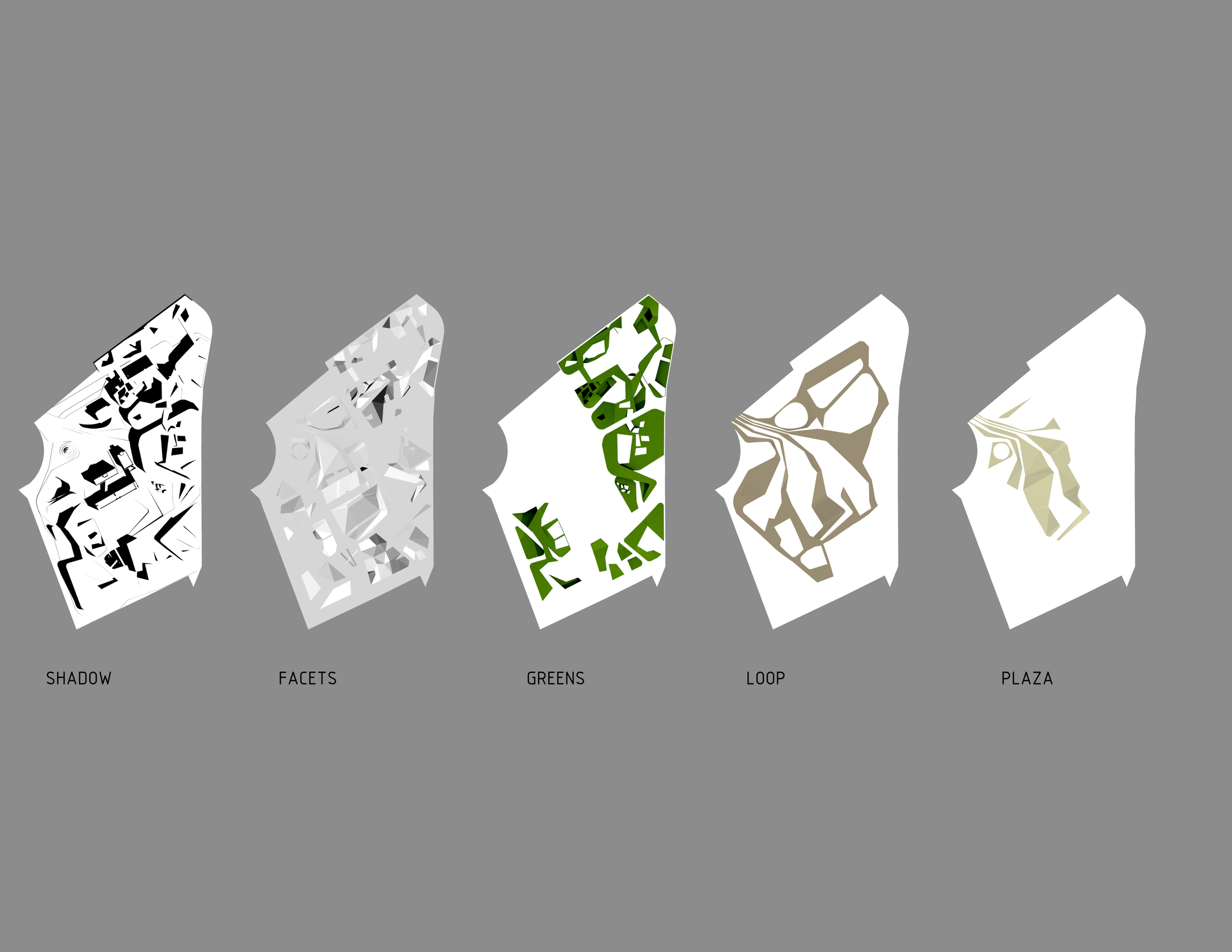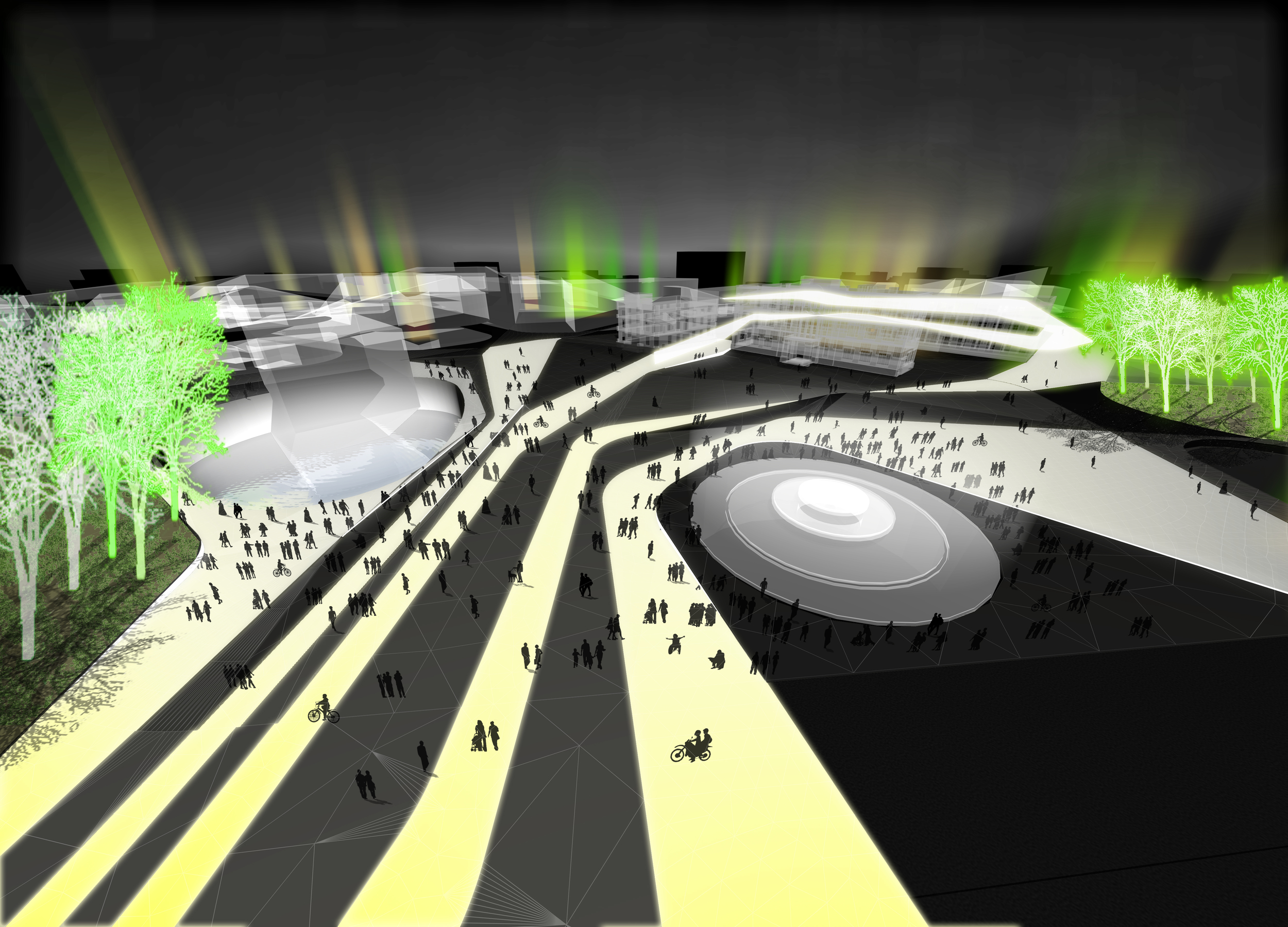2005 - Gwangju, Korea
Asian Culture Complex
Gwangju, Korea
CLIENT Executive Agency for Culture Cities / MCT / SIZE 118,170 m2 / STATUS Competition, honorable mention, 2005 / DESIGN TEAM Balmori Associates / iArc, LLP
The Asian Culture Complex should be a place where new culture emerges, rather than manufactured by institutions. Emergence can be achieved by maximizing social contacts, in other words, network complexity. As an urban strategy, differentiation of the whole site into smaller parts is executed by continuing existing and neighboring urban fabric, further being transformed by programmatic interpretations. Then the parts are connected with each other according to specific relationships between sub-programs, forming a 3D complex of nested networks. Two distinct network organizations emerge out of it; programmatic network (shop¬ping, eating & drinking, learning, conferencing, showing & playing, working and living) and ecological network (park, water and wind). The interest is in generating urban capability of producing a flexible system that is dynamically adaptable, a creative system that can adjust itself freely to temporal events and urban challenges. The differentiated connectivity of each network plays a vital role in modulating its emergent system. The question of what is culture and what is Asian will be constantly redefined and re-generated by means of this new urban system
The technique of generating a form for composites of landscape and architecture is instigated from close reading of spatial organization of existing urban fabric. Seemingly random urban development which pervades the central district of Gwangju, in fact, reveals an intricate sys¬tem of connected interstitial spaces. Alleys, courtyards, plazas, sometimes a large private front yard for an institution, are interconnected each other, bounded by elaborate randomness of buildings around. The relationship between buildings and open spaces is reinterpreted as positive/negative of a relief and generates a latent 3D pattern for a new typology between landscape and architecture.





